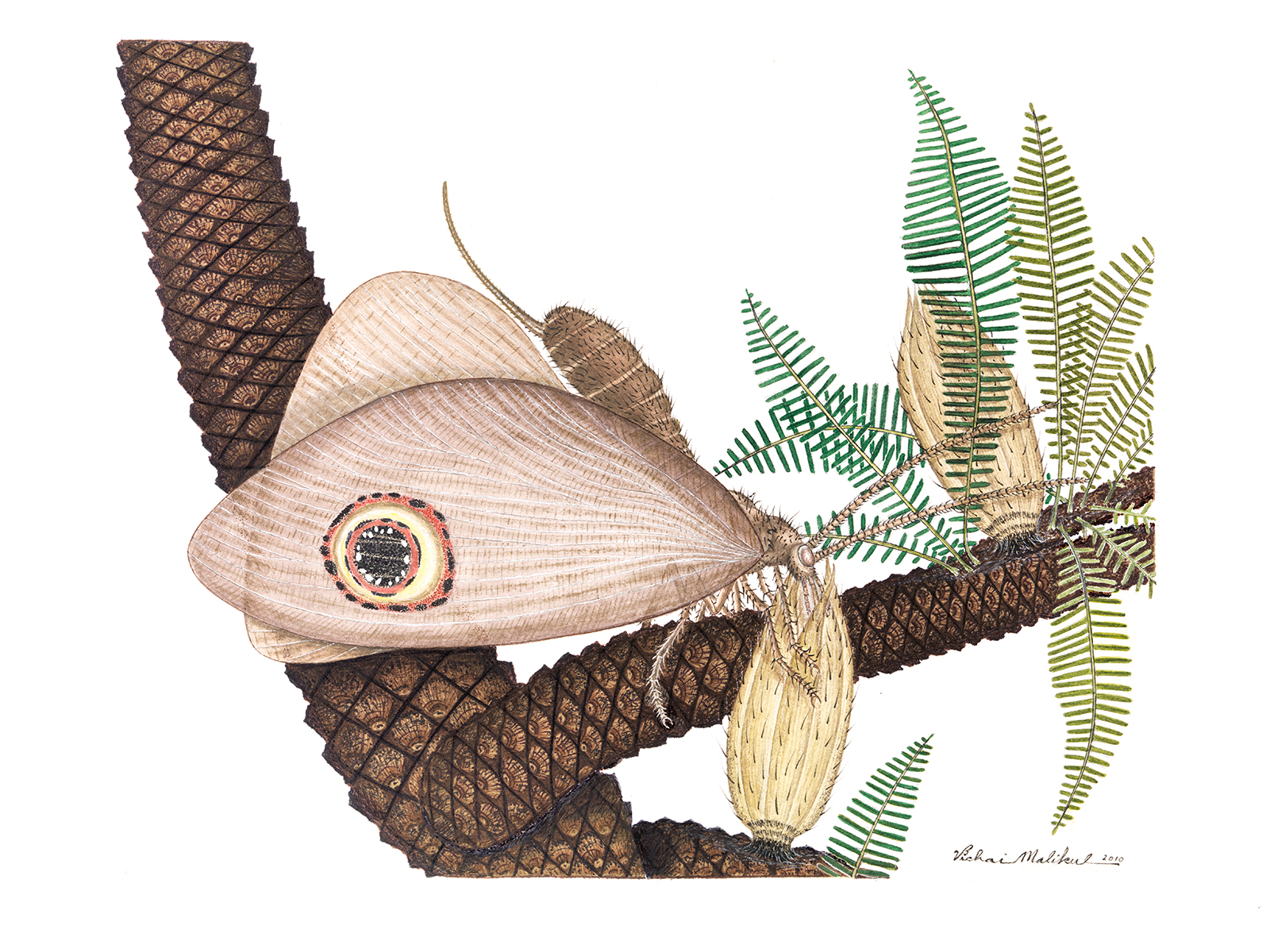The fossilized lacewing Oregramma illecebrosa (left) and the modern owl butterfly Caligo Memnon (right). Images: Conrad C. Labandeira and Jorge Santiago-Blay
Charles Darwin famously described evolution as producing "endless forms most beautiful and most wonderful," but that doesn't mean nature is averse to recycling ideas. Take the above split-image comparing a breathtaking Jurassic lacewing fossil with a modern owl butterfly.Though they look nearly identical, according to the fossil record, lacewings emerged about 40 million years before butterflies, and their descendents are more closely related to modern net-winged insects like snakeflies and fishflies, according to a study published today in the Proceedings of the Royal Society B.The study's authors were able to revamp the two insects' evolutionary timelines and learn more about their relationship to one another thanks to the discovery of several new fossils from the extinct kalligrammatid family along the border of China and Kazakhstan."Poor preservation of lacewing fossils had always stymied attempts to conduct a detailed morphological and ecological examination of the kalligrammatid," co-author David Dilcher, a paleobotanist based at Indiana University, said in a statement. "Upon examining these new fossils, however, we've unraveled a surprisingly wide array of physical and ecological similarities between the fossil species and modern butterflies, which shared a common ancestor 320 million years ago," he said.The result is a stunning reminder that convergent evolution—when organisms independently evolve similar traits—is not only a geographical phenomenon, but a temporal one. In other words, completely separate lineages can resemble each other across both continents, and across time.What worked for lacewings 165 million years ago continues to work for butterflies today, which is especially trippy considering that both seem to have evolved so-called "eyespots" on their wings, which are a common mimicry tactic for tricking predators into thinking they are being watched.In that light, it's almost as if the long-dead ecosystem that shaped the lacewing is, indeed, eerily staring at us from within the insect's intricate remains. Mother Nature, you are one creepy, beautiful weirdo.
"Upon examining these new fossils, however, we've unraveled a surprisingly wide array of physical and ecological similarities between the fossil species and modern butterflies, which shared a common ancestor 320 million years ago," he said.The result is a stunning reminder that convergent evolution—when organisms independently evolve similar traits—is not only a geographical phenomenon, but a temporal one. In other words, completely separate lineages can resemble each other across both continents, and across time.What worked for lacewings 165 million years ago continues to work for butterflies today, which is especially trippy considering that both seem to have evolved so-called "eyespots" on their wings, which are a common mimicry tactic for tricking predators into thinking they are being watched.In that light, it's almost as if the long-dead ecosystem that shaped the lacewing is, indeed, eerily staring at us from within the insect's intricate remains. Mother Nature, you are one creepy, beautiful weirdo.
Advertisement
